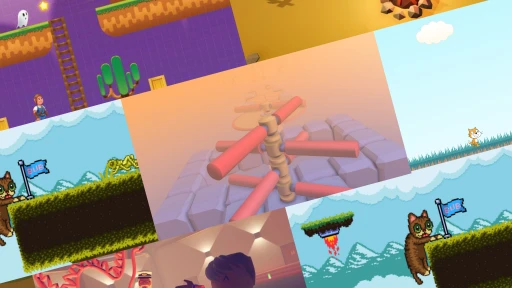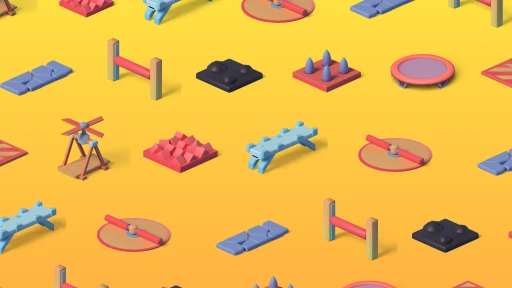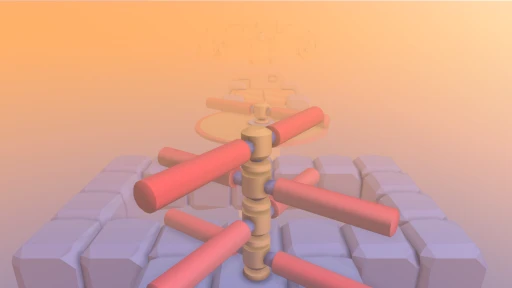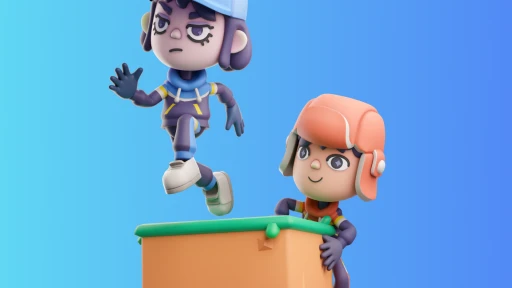Starting the journey of game making is a thrilling adventure filled with countless discoveries. Creating digital worlds,
orchestrating narratives and stories, and breathing life into characters is nothing short of magic.
If you've ever felt the pull of game creation, this article will show you how to bring that desire to fruition. And
regardless of your skill level, there’s room for everyone in game creation, from beginners to seasoned developers. All
you need to do is take that first step.
But where should you start?
[]() Soba recommends that you begin with some of the essentials of game development.
Start with How Games Work and Who Is Involved in Making a Game .
Once you understand game-building fundamentals, this article will bring you from beginner to advanced.
Let’s begin.
How to make your own game
Here are the six steps to bring your game to life:
1. Define your game
This initial phase is really important, as it sets the tone and direction for your entire project. When defining your
game, it's crucial to understand the 'why' behind it.
What inspires you to create this game? Who is your target audience? Answering these questions will help you identify
your motivation and objectives.
Next, think about the genre and core mechanics of your game. Is it a shooter game or an obby
game ? Your choice will steer your creative process. Additionally, start thinking about what makes your game unique,
which could include specific gameplay assets or a captivating storyline.
A well-defined game vision is a compass that will guide you. It will serve as the foundation upon which your creativity
will blossom and evolve.
2. Build your game world
Once you've solidified the vision for your game, it's time to get down to it: building your game world. This phase is
like bringing a canvas to life with vivid colors and intricate details. It’s what will make your game stand out!
The first part of your game world isn’t necessarily graphics-based, although graphics are a part of it. It’s about
your story. And your story is the spine of your game world and narrative. It's what gives your game depth and makes it
engaging. The narrative can be complex, with twists and turns, or it can be simple and straightforward.
Next is about building the environment with assets, which is the soul of your game. It gives your game world its
appearance and ambiance. Having assets laid out in a thoughtful way is important for immersing players in the theme.
Generally, the environment style should complement the story and genre. For example, a horror game might employ dark and
eerie visuals, while a casual mobile game might opt for vibrant and cartoonish graphics.
3. Set the rules
A game is essentially an interactive system; the player engages with it through inputs, and the game responds based on a
set of predefined rules. Think of the rules as the natural laws of your game world. They dictate everything from how
characters can interact with objects to the consequences of their actions. For instance, if a character jumps off a
cliff, will they lose health, or will they arrive on a different plane? If a character interacts with an asset, will
they collect a point or will they lose a life?
Additionally, rules aren’t solely about constraints. They also set clear goals for the player, including conditions
for winning, losing, or progressing in the game. Well-crafted rules strike a balance between challenging the player and
providing them with a sense of accomplishment.
Players should feel like the game world is coherent and that similar actions yield predictable outcomes. This doesn't
mean there can't be surprises, but fundamental mechanics should remain stable. To add these rules on Soba, use our
Behavior Editor and post any questions on specific mechanics in our support channel on Discord .
4. Test, break, and refine
As you’re building your game, it's essential not to fall into the trap of thinking that everything will be perfect
from the outset. In fact, making an engaging and polished game is an iterative process. The cycle of testing, breaking,
and refining is a cardinal practice in game development.
We recommend that you begin testing your game earlier rather than later. It's also valuable to bring in external people
to try out your game. They approach the game without the biases and assumptions you may have as the developer. Encourage
them to explore and interact with the game in ways you didn’t anticipate. You’d be surprised at how creative players
can be when it comes to bending and breaking game mechanics. You can always ask for feedback from our community &
team on our Discord .
Gather feedback from your playtesters. Listen to what they enjoyed, what frustrated them, and what they found
confusing. Pay special attention to their first reactions, as this is likely to be similar to how new players will react
when your game is released.
While refining, be open to reevaluating the core aspects of the game. Sometimes, a change in a basic mechanic can
drastically improve the player experience. Also, focus on polishing details. Sometimes, the devil is in the details, and
the smallest adjustments can make a world of difference.
Finally, remember that the process of testing and refining is never truly done. Even after launch, games continue to
evolve through updates and patches based on ongoing player feedback.
5. Share it with the world
After all the hard work you’ve put into the previous steps, the time has finally come to share your game with the
world. It's the moment your creation, born out of dedication and creativity, becomes part of the global game landscape!
Publishing your game on Soba means that all the app users will be able to play your game. And if you want more people to
play, consider marketing it on social media, forums, and even gaming events to generate a buzz.
Lastly, remember why you created the game in the first place. Each game you make is a new opportunity to share a part of
your imagination, to challenge, entertain, and inspire others.
Final thoughts
Game development is a journey of creativity, problem-solving, and continuous learning. It's about crafting an experience
that will captivate players and leave a lasting impact. Whether you're an experienced developer or just starting,
there's always something new to explore and create in the world of gaming.
If you want to develop your game with ease, try out []() Soba. We have full guides for each of the six steps, making
sure you’re fully equipped to build the game of your dreams. Enjoy your journey in game development, and never stop
creating!



